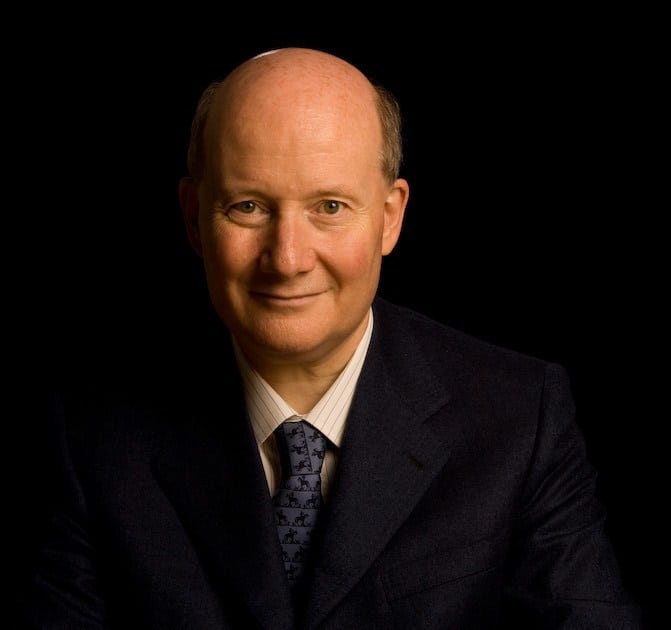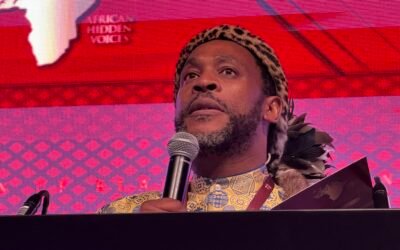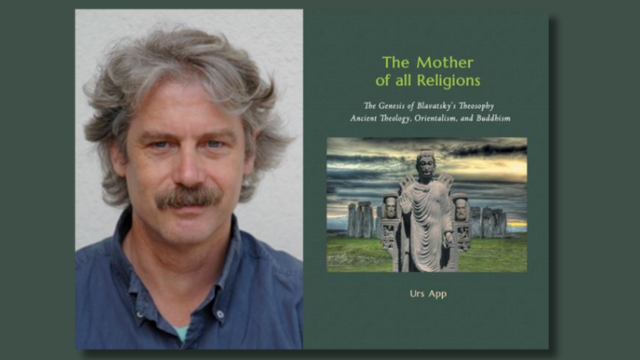The Bavarian painter produced the most famous portraits of Masters Koot Hoomi and Morya—reportedly not through entirely natural means.
by Massimo Introvigne

According to the Theosophical Society, the Masters are not divine beings but fully realized humans who, although having completed the cycle of reincarnations, decided to remain on Earth to help humanity. They live in inaccessible locations but communicate with selected women and men in different ways, including, at least in the early days of the Theosophical Society, through physical letters. The two co-founders of the Theosophical Society, Madame Helena Blavatsky (1831–1891) and Colonel Henry Steel Olcott (1832–1907), were among the recipients of such letters.
In the Society’s history, there were various attempts at producing portraits of the Masters. They were normally “seen” through preternatural means, although Russian artist Nicholas Roerich (1874–1947) and others claimed they had physically met some of them. Their portraits are shrouded in mystery and regarded as sacred and often secret artifacts, as the story of those produced by Australian painter Florence Fuller (1867–1946) demonstrates.
The most famous portraits of the Masters in Theosophical history were painted by Hermann Schmiechen (1855–1925). Born in Neumarkt in der Oberpfalz, Bavaria, on July 22, 1855, Schmiechen was a respected painter with a solid academic training. He studied under the well-known teacher Albrecht Bräuer (1830–1897) in Breslau, then at the Düsseldorf Academy and at the Académie Julian in Paris. His romantic portraits were widely appreciated.

As many romantics, Schmiechen was fascinated by fairy tales and esotericism. His painting of 1880 sometimes titled by galleries “Daydreams” is more probably a representation of Sleeping Beauty, whose story is a metaphor of the awakening of the soul according to different esoteric teachings.
Queen Victoria (1819–1901) personally suggested that Schmiechen be invited to London. He came there in 1883, and remained until 1901, becoming a favorite portrait painter for the British aristocracy.
On June 20,1884, the year after he arrived in London, Schmiechen became a member of the Theosophical Society. One day earlier, after the unsuccessful attempts by other artists, Schmiechen had started painting the portrait of a Master. It is unclear whether the Master was Morya or Koot Hoomi, but in the end, he portrayed both of them.
Schmiechen was personally selected by Master Morya. In a letter received by Madame Blavatsky in the previous days, now at the Winterthur Library in Winterthur, Delaware, Morya wrote: “Say to S.[chmiechen] that he will be helped—I myself will guide his hands with brush for K[oot Hoomi]’s portrait.” I saw the document at the Winterthur Library. It does not purport to be a transcript of instructions telepathically received from Master Morya. It is a letter claiming to be in Morya’s own handwriting. Dismissed by opponents as frauds, these “Mahatma letters” are all-important for early Theosophical history.

Morya also wrote: “Take her with you to Schmiechen and tell her to see.” From the context of the letter, it was clear that the unnamed “her” was Laura Holloway (1848–1930), a colorful American author, feminist lecturer, and Theosophist. Blavatsky and others regarded her with suspicion as a rebellious spirit and a flirt, who turned the heads of prominent Theosophists such as William Quan Judge (1851–1896) and Alfred Percy Sinnett (1840–1921), both married men.
But Blavatsky also recognized Holloway as a gifted clairvoyant. She became part of the inner Theosophical circle and started receiving letters from the Masters. She was involved with Indian Theosophist Mohini Chatterji (1858–1936)—whom reputedly she also tried to seduce—in the clairvoyant production of the book “Man: Fragments of a Forgotten History.” By 1885, disturbed by her claim to be in independent communication with the Masters, Blavatsky had pronounced her “a candidate who failed.”
Many years later, in 1912 (in “The Mahatmas and Their Instruments,” “The Word,” May 1912, 69–76, and July 1912, 200–6), Holloway would tell the story of how she attended with several other Theosophists, including Blavatsky, a session in Schmiechen’s studio. Holloway was not a smoker, but Blavatsky insisted she smoke a cigarette (perhaps containing more than tobacco), which put her in the right state to influence Schmiechen’s mind.

If we trust Holloway’s later recollections, Schmiechen painted Koot Hoomi first. She saw Master Koot Hoomi “standing near Mr Schmiechen,” and gave of him a typical orientalist description—“fine and rich Hindu dress,” “flowing curly black hair”—insisting, to Blavatsky’s annoyance, how much the Master looked like Mohini and how Mohini’s special relationship with the Master was closer than Blavatsky’s.
Holloway, however, also gave Blavatsky her due, claiming that she repeatedly corrected Schmiechen, suggesting changes to make the painting more similar to the actual likeness of Koot Hoomi, although “she sat where she could not see the easel, nor know what was on it.” Holloway reported that Schmiechen then went on to portray Master Morya, and this portrait was also approved by Blavatsky.

Theosophical scholar Boris de Zirkoff (1902–1981) questioned Holloway’s account, suggesting that Schmiechen’s hand was guided by Morya rather than by Koot Hoomi, and that Morya’s portrait perhaps came first. Clearly, there was more than one session in Schmiechen’s studio.
Blavatsky herself tried to produce portraits of the Masters in India in 1882 (with the support of “Tibetan brother” Djwal Khul, another adept working from an invisible location to help humans) and again in Europe after 1884. But no portrait of the Masters ever attained the semi-canonical status of Schmiechen’s, produced by a well-known artist who kept selling his paintings to British aristocracy and even royalty.

Schmiechen’s portraits were mentioned by the Masters in several letters and brought to the headquarters of the Theosophical Society in Adyar, India. Olcott deplored their photographic reproductions, claiming that photographs could not remotely compare to the strength and light of the originals. In 1890, Judge condemned the attempt by some American Theosophists to sell photographic copies as “a scandal. In one breath, they are sacred and then they are sold for money.”
Sacredness did not prevent Blavatsky to ask Schmiechen to come in September 1884 to Elberfeld, a suburb of Wuppertal, to the home of the founders of the first German Theosophical lodge, Gustav (1828-1900) and Mary Gebhard (1831-1891) and to slightly alter the portraits.

Schmiechen also painted a portrait (or two) of Blavatsky and a copy of each portrait of the Masters, one for the Gebhards and one for Judge.
In 1901, Schmiechen returned to Germany, settled in Berlin, and joined the German section of the Theosophical Society. In 1905, he made another copy of the two portraits of the Masters for the Section’s leader, and future founder of Anthroposophy, Rudolf Steiner (1861–1925). According to Helmut Zander (“Anthroposophie in Deutschland,” Göttingen: Vandenhoeck & Ruprecht, 2007–2008, I, 706), they were ritually used for some years in the German Esoteric Section under conditions of strict secrecy.

Schmiechen continued a career of painter in Germany until his death in 1925. In his later years, he left the Theosophical Society to embark into a new esoteric venture with Leopold Engel (1858–1931), to whom he left at his death some of his copyrights. Engel was a former Theosophist, visionary, “irregular” Freemason, and founder with Theodor Reuss (1855–1923) of an Order of the Illuminati. That Schmiechen formed a closed association with him confirms how important esotericism was for the German painter until his last days.

Massimo Introvigne (born June 14, 1955 in Rome) is an Italian sociologist of religions. He is the founder and managing director of the Center for Studies on New Religions (CESNUR), an international network of scholars who study new religious movements. Introvigne is the author of some 70 books and more than 100 articles in the field of sociology of religion. He was the main author of the Enciclopedia delle religioni in Italia (Encyclopedia of Religions in Italy). He is a member of the editorial board for the Interdisciplinary Journal of Research on Religion and of the executive board of University of California Press’ Nova Religio. From January 5 to December 31, 2011, he has served as the “Representative on combating racism, xenophobia and discrimination, with a special focus on discrimination against Christians and members of other religions” of the Organization for Security and Co-operation in Europe (OSCE). From 2012 to 2015 he served as chairperson of the Observatory of Religious Liberty, instituted by the Italian Ministry of Foreign Affairs in order to monitor problems of religious liberty on a worldwide scale.



